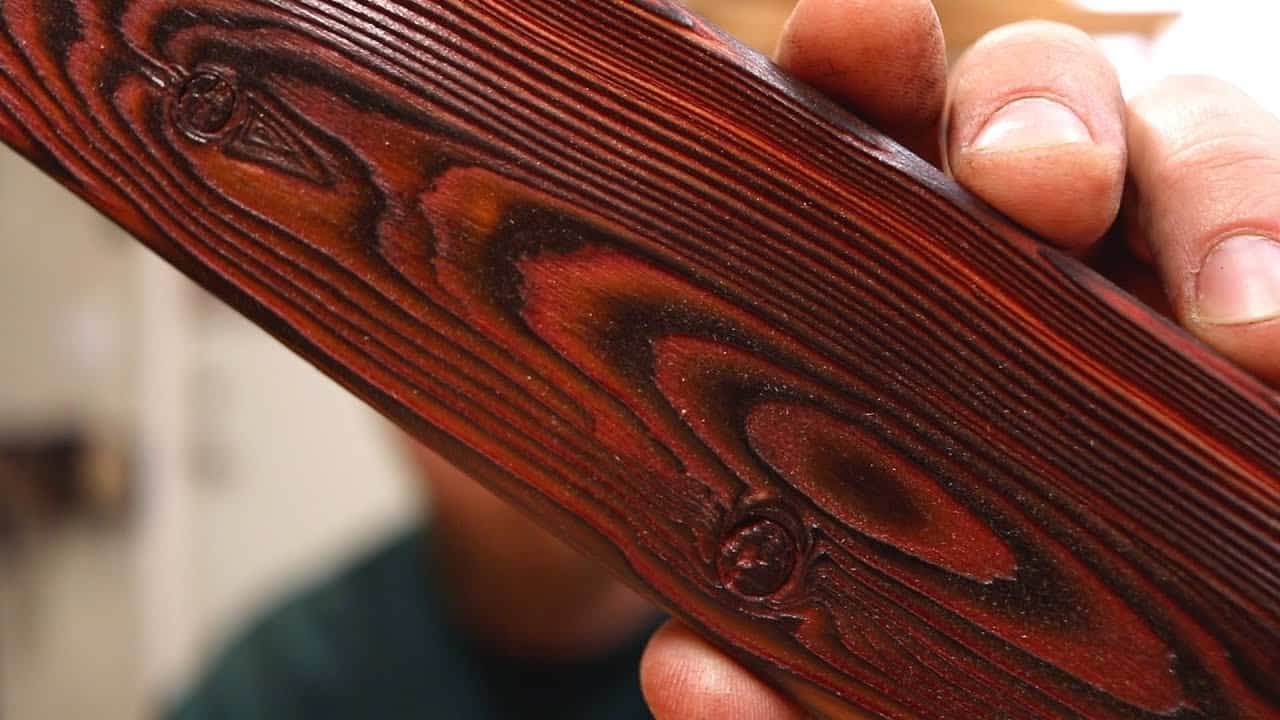Jodee from Inspire Woodcraft shared the woodworking tip featured in this video.
The video walks through how to pick the best lumber for a Shou Sugi Ban–inspired burn-and-brush finish, focusing on species, grain orientation, knots, and moisture content.
The goal is to choose boards that will char, brush back, and accept color reliably so the grain pops without problems during finishing.
Watch the full video and subscribe to Inspire Woodcraft:
Where to Buy and Which Species to Choose
Jodee recommends starting at typical box stores or lumber yards for construction-grade boards because the process works well with economical softwoods. Soft species such as pine, spruce, fir, and hemlock are ideal because their light color and softer springwood respond predictably to burning and brushing.
These lighter species provide a near-blank canvas for color and reveal strong contrast after the soft earlywood is removed, which is harder to achieve with dense hardwoods. Choosing locally available whitewoods makes the technique accessible without specialty lumber purchases.
Grain Orientation and the Best Face
Look for boards where the face comes from the outside of the log rather than from the center; that outside grain tends to give the rounded, marbled ring patterns many people want.
Boards cut to show those outer rings will burn and brush in a way that highlights the growth rings for a more organic, flowing appearance.
Boards cut differently can produce attractive striped patterns, which can be a desirable alternative; the key is selecting the grain look that suits the intended aesthetic. Trying several cuts from a pile and testing small samples helps determine which grain language fits the project.
Knots and Surface Defects to Avoid
Small knots are usually fine and can add character, but large holes, voids, or torn knots should be avoided because burning and brushing won’t access recessed cavities. Big voids will retain filler or color and create blotchy areas that are difficult to fix after staining or dyeing.
When choosing boards, inspect faces closely and avoid pieces with major damage on the intended show surface. Careful selection will reduce surprises after the burning and brushing steps.
Moisture Content and Thickness Considerations
Choose kiln-dried lumber (look for a KD stamp) rather than green or very wet stock, because moisture will cause warping, twisting, and poor color uptake when heat is applied. Wet boards can deform quickly during burning and often won’t take color consistently after the process.
Also avoid very thin stock for heavily burned work; thin pieces may warp or disintegrate under flame and aggressive brushing. A stable, dry blank gives predictable results and reduces the need to redo or stabilize panels later.
Practical Tips and How to Adapt the Method
Jodee suggests grabbing a variety of boards and testing small samples to learn how different pieces behave with the burn-and-brush technique. Experimentation helps identify the best species, grain faces, and acceptable knot sizes for a shop’s specific projects.
The same selection rules scale to larger applications: choose light-colored softwoods for maximum contrast, pick the face that shows the ring patterns you want, and avoid big voids and wet lumber.
These simple rules make the finishing steps—burning, brushing, and coloring—much more reliable.
Overall Takeaways
Picking the right board is the single most important step for a successful Shou Sugi Ban–inspired finish because species, grain face, knots, and moisture all determine how the wood will respond to flame and brushing. Making thoughtful choices up front saves time and improves the final look when color and texture are added.
With basic selection guidelines and a few test pieces, the burn-and-brush approach can be adapted to a wide range of projects and aesthetics while minimizing surprises during finishing.
Practicing on small scraps will build confidence before committing to larger panels or finished pieces.
Support Jodee by visiting his online store here: https://inspirewoodcraft.com/collections/all.
